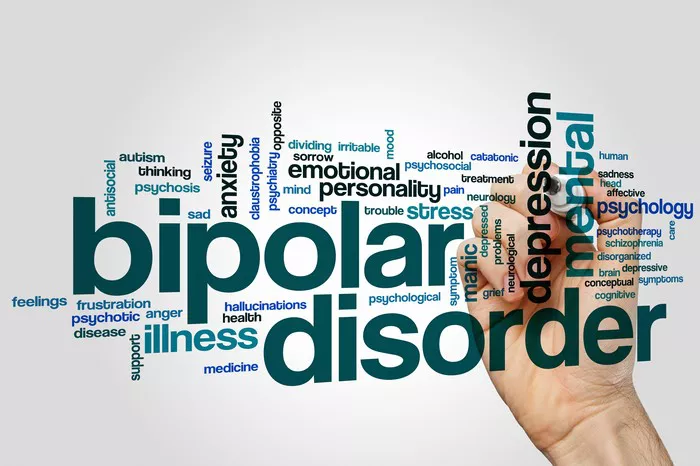Mental health conditions, particularly mood disorders, can be complex and often misunderstood. Among the most prevalent are unipolar depression and bipolar depression, two conditions that share similarities but differ in fundamental ways. Understanding the distinction between them is crucial for proper diagnosis, effective treatment, and long-term management. In this article, we explore the definitions, symptoms, causes, and treatments of both unipolar and bipolar depression, clarifying the key differences between the two.
Understanding Depression in General
Before delving into the differences, it’s essential to understand what depression entails. Depression is a mood disorder that affects how a person feels, thinks, and behaves. It can cause persistent sadness, loss of interest in activities, fatigue, and difficulty functioning in daily life. However, not all depressive episodes are the same, and the underlying causes and course of illness may vary.
What Is Unipolar Depression?
Unipolar depression, also known as major depressive disorder (MDD), is characterized by persistent depressive episodes without any history of mania or hypomania. People with unipolar depression experience symptoms that may include:
- Persistent sadness or low mood
- Loss of interest or pleasure in most activities (anhedonia)
- Sleep disturbances (insomnia or hypersomnia)
- Changes in appetite or weight
- Fatigue or loss of energy
- Feelings of worthlessness or excessive guilt
- Difficulty concentrating or making decisions
- Thoughts of death or suicide
These symptoms must persist for at least two weeks and represent a change from the person’s usual functioning.
What Is Bipolar Depression?
Bipolar depression occurs in the context of bipolar disorder, a mood disorder marked by alternating episodes of depression and mania or hypomania. Bipolar disorder is divided into several subtypes, including Bipolar I, Bipolar II, and Cyclothymia.
In bipolar depression, individuals experience the same depressive symptoms seen in unipolar depression. However, at other times, they may have episodes of:
Mania: Abnormally elevated mood, increased activity, inflated self-esteem, decreased need for sleep, talkativeness, racing thoughts, risky behaviors.
Hypomania: A milder form of mania that does not include psychotic symptoms or cause significant functional impairment.
Bipolar I vs. Bipolar II
Bipolar I Disorder: Involves at least one manic episode, with or without depressive episodes.
Bipolar II Disorder: Involves at least one hypomanic episode and one major depressive episode, but no full manic episodes.
Key Differences Between Unipolar and Bipolar Depression
1. Presence of Mania or Hypomania
The most defining difference is that bipolar depression includes episodes of elevated mood (mania or hypomania), while unipolar depression does not. This makes bipolar disorder more dynamic and complex in terms of mood fluctuations.
2. Course of Illness
Unipolar depression tends to be consistent in mood, often remaining in a depressive state unless treated. Bipolar depression involves cyclical changes, with periods of depression followed by mania or hypomania.
3. Age of Onset
Bipolar disorder often begins in late adolescence or early adulthood, while unipolar depression can start at any age but typically develops a bit later.
4. Response to Treatment
Antidepressants are commonly prescribed for unipolar depression and can be very effective. However, in bipolar disorder, antidepressants alone may trigger manic episodes, so mood stabilizers or antipsychotics are usually required alongside or instead of antidepressants.
5. Family History
A family history of bipolar disorder strongly increases the risk of developing bipolar depression, more so than in unipolar depression. Genetics play a larger role in bipolar disorder.
Diagnostic Challenges
Bipolar depression is frequently misdiagnosed as unipolar depression, especially if the manic or hypomanic episodes are mild or not reported by the patient. This can lead to inappropriate treatment, worsening of symptoms, or delayed mood stabilization.
A careful psychiatric evaluation, including a detailed patient history and input from family or close friends, is vital. Mood charting—keeping a diary of moods and behaviors—can help track mood fluctuations over time.
Causes and Risk Factors
Unipolar Depression
Biological factors: Imbalances in neurotransmitters (serotonin, norepinephrine, dopamine)
Genetics: Family history of depression
Psychological factors: Negative thinking patterns, trauma
Environmental factors: Chronic stress, loss, financial problems, or abuse
Bipolar Depression
Genetic predisposition: Strong hereditary component
Brain structure and function: Changes in areas controlling mood regulation
Neurochemical imbalances
Life stressors: Trauma, drug or alcohol misuse, major life changes
Treatment Approaches
For Unipolar Depression
Medications: Antidepressants (SSRIs, SNRIs, TCAs, MAOIs)
Psychotherapy: Cognitive Behavioral Therapy (CBT), interpersonal therapy
Lifestyle changes: Regular exercise, sleep hygiene, nutrition
Electroconvulsive Therapy (ECT): For severe or treatment-resistant depression
For Bipolar Depression
Mood stabilizers: Lithium, valproate, lamotrigine
Atypical antipsychotics: Quetiapine, lurasidone
Psychotherapy: Focused on mood regulation and coping strategies
Avoiding antidepressant monotherapy: To prevent manic switch
Psychoeducation: Helping patients and families understand the disorder
Prognosis and Long-Term Management
Both conditions are manageable with appropriate treatment, but bipolar disorder typically requires lifelong mood stabilization. People with unipolar depression may experience single or recurrent episodes, and long-term remission is possible with treatment.
Bipolar disorder tends to be more disruptive to life function, requiring close monitoring and sometimes hospitalization during manic or severe depressive episodes.
Adherence to treatment, a strong support network, and regular follow-up with mental health professionals greatly improve outcomes for both disorders.
When to Seek Help
Anyone experiencing persistent symptoms of depression or noticeable changes in mood should seek help from a healthcare provider. Early diagnosis and treatment can dramatically improve quality of life and prevent complications such as self-harm or suicide.
If there are signs of mania or hypomania—such as unusual energy, risky behaviors, or rapid speech—mentioning these to a doctor is critical in distinguishing between unipolar and bipolar depression.
Conclusion
While unipolar and bipolar depression share overlapping symptoms of depressive episodes, they are distinct disorders with different causes, courses, and treatments. The presence or absence of manic or hypomanic episodes is the primary distinguishing factor. Accurate diagnosis is essential for effective treatment and to avoid complications, especially in cases of bipolar depression where certain medications can worsen symptoms.
With increased awareness, better diagnostic tools, and advances in mental health treatment, individuals suffering from either form of depression can achieve stability, functionality, and a high quality of life.
You Might Be Interested In:

